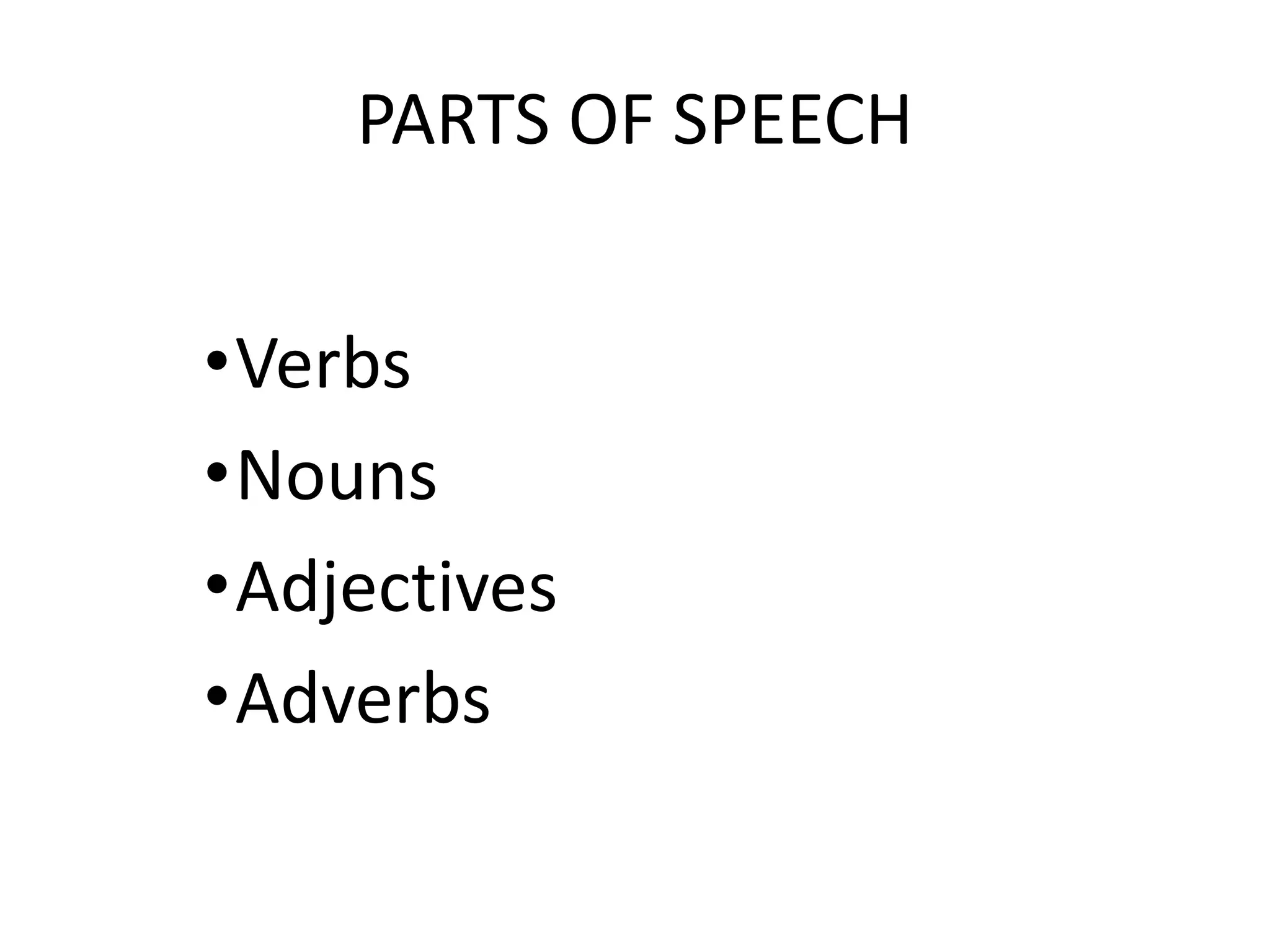This document provides a vocabulary for describing graphs and data visualization. It includes parts of speech like verbs, nouns, adjectives, and adverbs that are commonly used to describe trends, data points, and changes in graphs. Verbs are categorized by their use for general description, describing upward trends, and describing downward trends. Nouns name the parts of graphs. Adjectives and adverbs modify verbs and nouns. Phrases are provided for describing different levels of change or no change. Connectives are included to link ideas. Finally, the proper use of verb tenses for graphs about present, past or connected past and present facts is noted.








